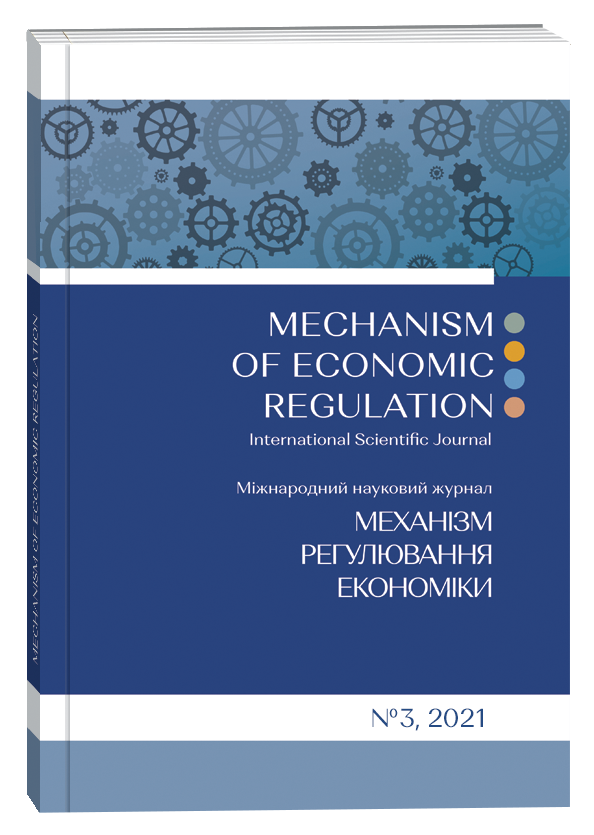ФОРМУВАННЯ БРЕНДУ ТЕРИТОРІЇ: ВПЛИВ ГЕНДЕРНОГО ФАКТОРУ
Анотація
Нині питання територіальної привабливості та її стратегічний розвиток стають більш актуальними. Територіальний брендинг є одним із головних етапів у цьому процесі, який дозволяє виділити реальні та створити нові переваги та асоціації із відповідною територією. Систематизація наукових напрацювань засвідчила, що теоретичні та практичні дослідження територіального брендингу суперечливі через вплив низки зацікавлених сторін, які перешкоджають розробці унікальної концепції територіального розвитку. Попри те, що територіальний розвиток є складною системою, яка залежить від сприйняття та ставлення мешканців, питання гендерних аспектів регіональної ідентичності ще недостатньо досліджені науковцями. Таким чином актуальним є пошук балансу між інтересами різних соціальних груп при формуванні територіального бренду. У цій статті узагальнено аргументи та контраргументи щодо формування територіального бренду з урахуванням гендерних особливостей. Метою дослідження є аналіз ролі гендерних особливостей у механізмі формування територіального бренду. Предметом дослідження є гендерні особливості територіальних одиниць. Методологічною базою дослідження є методи абстрагування, узагальнення, синтез, графічні методи та системний аналіз. У рамках даного дослідження було розкрито відмінності між чоловіками та жінками у сприйнятті інформації. Розглянуто вплив гендерної нерівності на ставлення до території. Отримані результати засвідчили, що територіальний бренд є не лише інструментом просування території, але сприяє формуванню її ідентичності, подоланню гендерної нерівності та підвищення конкурентних переваг.
Посилання
Akhundova, N., Pimonenko, T., & Us, Ya., (2020). Sustainable growth and country green brand: visualization and analysis of mapping knowledge (Book of Proceedings), 55th International Scientific Conference on Economic and Social Development – "Economic and Social Development", Baku, 1819 June 2020, P. 234–243. (Web of Science in English)
Bilan, Y., Pimonenko, T., & Starchenko, L. (2020). Sustainable business models for innovation and success: bibliometric analysis. In E3S Web of Conferences (Vol. 159, p. 04037). EDP Sciences.
Chygryn, O. (2017). Green entrepreneurship: EU experience and Ukraine perspectives. Centre for Studies in European Integration Working Papers Series, 6, 6−13.
Chygryn, O.Yu., & Scherbak, A.S. (2011). Analysis of the problem of the introduction the environmentally friendly production in Ukraine. The mechanism of economic regulation. 1, 235−241.
Dubina, O., Us, Y., Pimonenko, T., & Lyulyov, O. (2020). Customer Loyalty to Bank Services: The Bibliometric Analysis. Virtual Economics, 3(3), 52−66. https://doi.org/10.34021/ve.2020.03.03(3)
Gaggiotti, Hugo & Yunak, O. (2008). City brand management (CBM): The case of Kazakhstan. Place Branding and Public Diplomacy. 4. 10.1057/palgrave.pb.6000081.
Hankinson, Graham. (2004). Relational Network Brands: Towards a Conceptual Model of Place Brands. Journal of Vacation Marketing. 10. 109−121. 10.1177/135676670401000202.
Hussain, S. A., Haq, M. A. U., & Soomro, Y. A. (2020). Factors Influencing Consumers’ Green Purchase Behavior: Green Advertising as Moderator. Marketing and Management of Innovations, 4, 144−153. http://doi.org/10.21272/mmi.2020.4-11
Lyeonov, S., Pimonenko, T., Chygryn, O., Reznik, O., & Gaynulina, R. (2021). Green brand as a marketing instrument: Principle, features and parameters. International Journal of Global Energy Issues, 43(2-3), 147−165. https://doi.org/10.1504/IJGEI.2021.115141
Lyulyov, O., Pimonenko, T., Kwilinski, A., & Us, Y. (2021). The heterogeneous effect of democracy, economic and political globalisation on renewable energy. In E3S Web of Conferences (Vol. 250, 03006). EDP Sciences. https://doi.org/10.1051/e3sconf/202125003006
Official website of State Statistics Service of Ukraine (2021). Retrieved from: http://www.ukrstat.gov.ua/
Palienko, M., Lyulyov, O., Denysenko, P. (2017). Fiscal Decentralisation as a Factor of Macroeconomic Stability of the Country. Financ. Mark.Inst. Risks, 1, 74–86.
Pimonenko T., Us J., Leus D., Fedyna S. (2017). The modern ecological and economic instruments for sustainable development. Bulletin of Sumy State University. Economy Ser., 2, 57–67.
Pimonenko, T., Liuliov, O., & Us, Y. (2019). Marketing strategies of green investments: basic concepts and specific features. Herald of Ternopil National Economic University, (1 (91)), 177−185.
Pimonenko, T., Lyulyov, O., Chygryn, O. (2018). Marketing of green investment: collaboration between main stakeholders. Reporter of the Priazovskyi State Technical University. Section: Economic sciences, 36, 214−220.
Pimonenko, T., Lyulyov, O., Chygryn, O. (2019). Company’s image and greenwashing in the framework of green investment concept. Scientific Bulletin of the Odessa National Economic University, 2, 143−157.
Pimonenko, T., Lyulyov, O., Us, Ya. (2019). Marketing strategies of green investments: main provisions and basic features. Herald of Ternopil National Economic University, (1), 177−185. doi:https://doi.org/10.35774/visnyk2019.01.177.
Pimonenko, T., Toptun, Yu., Us, Ya. (2020). Gender aspects and green marketing: a case for Ukraine. Visnyk of Sumy State University. Economy series, 2, 133−140
Qu, H., Kim, L. H., & Im, H. H. (2011). A model of destination branding: Integrating the concepts of the branding and destination image. Tourism Management, 32(3), 465–476. doi:10.1016/j.tourman.2010.03.
Shymon, S., Kolomiets-Ludwig, E., Osiejewicz, Jo., Krawczyk, D. & Kaminska, B. (2020). The Role of Country Brand in Providing Economic Resilience. Marketing and Management of Innovations, 1, 303-311. http://doi.org/10.21272/mmi.2020.1-26
Statistical documents of series F №111. Gender Mainstreaming in Statistics (2016). Department of Economic and Social Affairs of United Nations. Access mode: https://unstats.un.org/unsd/demographic-social/Standards-andMethods/files/Handbooks/gender/Integrating-a-Gender-Perspective-into-Statistics-R.pdf
Thomas, T. (2020). Employee Advocacy as a Marketing Strategy to Power Brand Promotion: an Employee Perspective. Marketing and Management of Innovations, 2, 167−181. http://doi.org/10.21272/mmi.2020.2-12
Tovmasyan, G. (2020). Raising the Effectiveness of Tourism Marketing and Branding: Evidence from Armenia. Marketing and Management of Innovations, 1, 167−181. http://doi.org/10.21272/mmi.2020.1-13
Us, Ya., Pimonenko, T., Lyulyov, O. (2020). Energy efficiency profiles in developing the free-carbon economy: on the example of Ukraine and the V4 countries. Polityka Energetyczna – Energy Policy Journal, 23(4), 49−66. https://doi.org/10.33223/epj/127397
Zeng, F., Bhutto, M. Y., & Soomro, Y. A. (2019). Chinese Smartphone Brands: Gender, Consumers Behavioural and Attitudinal Loyalty. Marketing and Management of Innovations, 2, 83−98. http://doi.org/10.21272/mmi.2019.2-08


